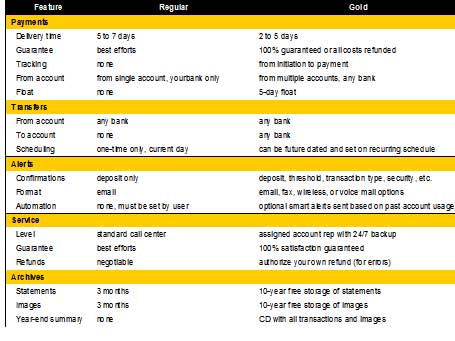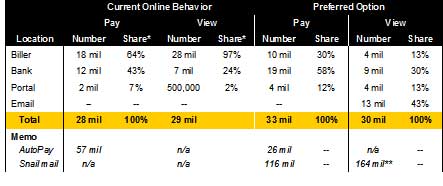Without expansive brick-and-mortar operations to generate
business, card companies typically devote far more resources to direct
marketing and cardholder retention than retail banks. You can learn a lot by
watching what the card companies do online.
One
Develop a Killer App
Profitable online originations involve good marketing and a great
application. It must be short and sweet and loaded with imbedded help for
every term, otherwise only the desperate or dishonest will submit it. Most
major credit card applications today are a model of simplicity. For example,
Juniper’s online application (below) consists of a single screen
posing just seven questions beyond standard identification information
(name, address, phone number, etc.).
Two
Screen Out Improper Applications Before Submission
One of the main problems with non-preapproved credit card applications is
all the worthless applications received. Not only has time been wasted
researching the applicant’s credit report, but also your company must
carefully follow regulatory requirements for communicating denials, lest you
become a target of class-action litigators. Financial institutions,
especially credit card issuers, now start the application process with two
or three screener questions to reduce the number of applicants applying for
products for which they are completely unqualified. This is a win-win,
saving the bank application-processing costs, and helping applicants prevent
lowering of credit scores due to application denial. Juniper uses a popup to
deliver the screener questions (below).
Three
Segment Your Base with Regular, Gold, Platinum, and So
On

We believe that premium channels will be the next big thing in online
banking. That’s why we selected Money HQ from Online Resources
as our top innovation of 2003. A review of the credit card industry provides
clues as to how online banking may play out. American Express was a
segmentation pioneer, rolling out a Gold Card in 1966, only eight
years after the introduction of its standard charge card. After the huge
success of the Gold strategy, widely copied by bankcards in the late 80s,
the company further segmented its card base with the Platinum in 1984—again,
widely copied by bankcards in the mid-to-late 90s. Now American Express
operates a half-dozen card lines: Green, Gold, Platinum, Optima, Delta
SkyMiles, and Blue, with plenty of sub-segments of each.
We expect to see the same thing happen with online banking. Now that
leaders such as BofA, Wells, and Citibank have offered online banking for 15
years or more, and with penetration closing in on 50% of their checking
account bases, the companies will begin offering different versions of their
online programs. Expect to see differentiation around payment capabilities,
credit access, account aggregation, service levels, human attention, and
account alerts (see Table 9, below).
Table 9
Premium Online Banking Offerings
possible features and benefits

Source: Online Banking Report, 2/04
Four
Use Real-time Payments to Drive Users Online
According to Gartner’s latest research,* in the United States, biller
direct payment is used by six million more adults than online bill payment
through a bank, 18 million vs. 12 million. However, according to Gartner,
respondents prefer bank sites for payment by almost two-to-one, 19 million
vs. 10 million, although both options trail preauthorized debit, preferred
by 26 million, and snail mail preferred by 116 million.
Banks can tap into the growing popularity of electronic payments by
offering simpler bill-payment sites that allow users to make one-time
payments or setup preauthorized debits, without a lengthy signup process.
Banks can also win more user by offering more choices, such as paying via
credit card.
Table 10
Bill Payment According to Gartner
millions of U.S. adults paying bills online

Source: EBPP Future Blends Direct Bank Aggregation Models,
Jan 13, 2004, by Avivah LItan, Gartner,
http://www.gartner.com/ $95,
data from survey fielded May 2003
AutoPay = preauthorized electronic debit
*Can choose more than one option, so the sum is higher than 100%
**Total the still wants to receive bills via snail mail
Five
Cross-sell

Credit card issuers have long been far more aggressive than banks
pitching ancillary services, such as credit card registration, credit report
monitoring, and credit insurance. They are beginning to take that approach
to online marketing. For example, last year, Chase’s credit card
group sent me more than 40 sales/service email messages. Issuers have also
found profits selling all types of unrelated products and services from
flashlights to magazine subscriptions. While, we don’t think banks should
start pitching knife sets online, they could be more aggressive in selling
related products, especially credit report monitoring, insurance, and value
investments.
Six
Use Email for Retention

Credit card issuers are much further along in providing email messages to
users. Card companies are using email to remind users of payment due dates,
confirming charges and payments, marketing messages, balance transfer
offers, line increase notifications, credit card check offers, e-statements,
credit report and other ancillary product sales, holiday messages, and other
relation-enhancing messages: even early collection efforts have gone
electronic. Chase is one of the most prolific emailers. During 2003,
we received at least 70 email messages from the bank about our active
credit card account, 46 of the messages (at least the ones we saved), were
marketing/service oriented (see example left) and the other 24 had to do
with scheduling and confirming payment of the bill (see OBR website for more
examples).
Seven
Provide Compelling Online Account Management
Card issuers provide an online experience on par with similarly sized
banks; however, some are becoming more creative with their
account-management websites. For example, American Express offers its
Small Business Dashboard to manage charge card (see screenshot left).
One of its distinguishing features is a credit-status bar that graphically
shows whether the charge account is approaching its limits (e.g., green
means in good standing, yellow means charging privileges at risk,
and red is account suspended).
Card issuers are also making online statements interactive with the
ability to click through to get more information or dispute a charge,
contact the merchant, or re-sort transactions.
Eight
Make Transfers Simple
For several years, companies such as Bank of America
www.easybt.com have
provided simple online balance-transfer solutions for cardholders. Banks too
should make it simple for users to consolidate deposit and loan balances in
a similar manner using account aggregation technology and interbank-funds
transfers. Citibank’s new A2A service and Money HQ from
Online Resources are on the right track.
Nine
Integrate with Direct Marketing
The latest trend is to provide special URLs and/or application numbers
in preapproved snail-mail solicitations so recipients can respond quickly
online. For example, Fleet’s
www.applybizcard.fleet.com
This is a win-win, giving the customer faster direct access to the special
offer and providing an interactive environment for the card issuer to
encourage balance transfers or other upsells. This integrated technique will
quickly become a standard practice for financial direct marketing.
Ten
Get Rid of the Paper
With ever increasing printing and postage costs, the business case for
e-statements continues to grow stronger. Although paper-suppression efforts are
still in their infancy, we expect credit card issuers will be the first to
successfully wean a critical mass of users off paper. Although it will take
years of marketing efforts, for example, we’ve already received eight messages
from Chase encouraging us to switch to a
credit card e-statement; the formula for adoption is relatively simple:



